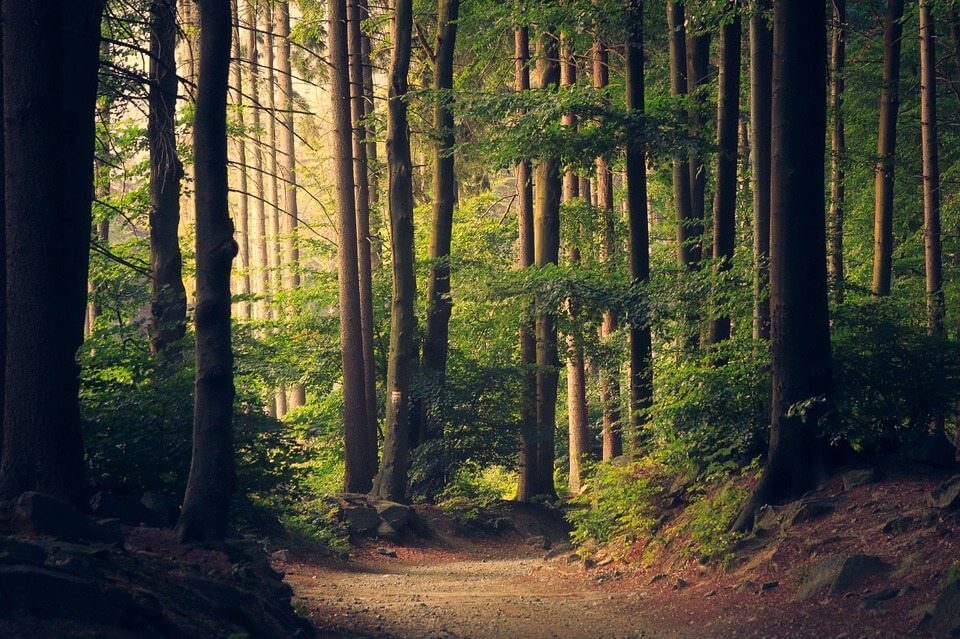Where Does Wood Flooring Come From?
May 14, 2014
So you know that the wood for hardwood floors can come from a number of different tree species, both domestic and exotic. But have you ever wondered just where those trees come from, how they’re grown and harvested, or, say just how many trees it takes to make a hardwood floor? Well, keep reading and find out how your floor was born.
Where do the trees for flooring grow?
There are more than 20 species of tree that grow in the United States that provide excellent wood for flooring. Most of them grow in the eastern part of the country (hardwoods tend to be of the deciduous broad-leaf variety rather than the evergreen needle-leafed trees of the West Coast). More than half of hardwood harvested domestically is oak that grows from New England to the Midwest. The U.S. also imports quite a bit of “exotic” hardwood like mahogany, rosewood, teak and wenge, which typically grow in more tropical regions like Brazil and Indonesia. However, we also get a good amount of wood from Canada, including the maple of which they are so proud (justifiably so).
How many trees does it take to make a hardwood floor?
Well, the number of trees you need will, of course, depend on the size of floor you are making and the size of the trees the lumber comes from, among other factors. To give you an idea, though, consider the floor installed at AT&T Stadium for the recently concluded Final Four NCAA men’s basketball tournament. That floor, about 9,800 square feet of solid maple (70’ x 140’ – almost twice the size of a normal basketball court), it has been widely published, required somewhere around 30 mature trees, though the size of the trees at harvest was not specified. Coming closer to home, one might expect to get from a tree about 18 inches in diameter with about 10 feet of mill-able trunk something close to 100 square feet of flooring, depending on the quality of the wood once it was milled.
Is that a lot of trees?
If adding up the numbers above has you running for the bamboo or cork, wait just a moment and consider the following. In the last century, almost all manufacturers of lumber in the United States have found ways of harvesting and replanting that allow forests to replenish themselves at an even faster rate than they are being culled. After all, for people in the logging and lumber industries, nothing would do them more harm than to see the end of the forest—it’s the source of their livelihood.
According to the U.S. Department of Agriculture’s Forest Service, the annual net growth of hardwoods at present is significantly greater than the average annual demand. In fact, even though it takes some 40 to 60 years for most hardwoods to mature, the trees that are growing in forests used for logging today probably won’t actually be needed for another 100 years. So, even though it seems like a lot of trees, remember that trees are one of the most renewable resources around. They require no energy-gobbling factory production or even significant irrigation and the carbon they trap as they grow stays trapped, even after they have transformed into cabinets, furniture, flooring, and art.
Are there rules about which trees can be used?
There certainly are. Most people in the logging industry understand the importance of reforestation. For them, the plenitude of the forest is not only an environmental issue but one of economic concern as well. It is doubly important to those involved in the production and distribution of lumber that forests remain in robust health. Though opinions on how lumber should be harvested vary quite a bit, most lumber in the U.S. originates in forests that are carefully managed in one way or another. There are also a host of organizations that exist specifically to ensure that trees have been harvested safely—for the forest, the loggers, and the quality of the lumber.
As to exotic woods, it is against the law in the U.S. to import wood products that have been illegally harvested abroad. Though it is left, of course, to those governments to determine the laws related to logging in their countries, exotic wood flooring is now coming more and more from either tree plantations or areas specifically designated for harvesting which, in most cases, are well-managed for the health of the forest.
So what about the parts of the tree that can’t be used for lumber?
This is actually one of the coolest parts of the lumber industry. Throughout the process of milling and cutting wood for lumber, every extra part is used for something. Decent-sized bits not suitable for lumber are sent to manufacturers of furniture and other things that require smaller, less uniform pieces. Bark and shavings are sent off to be used for paper or mulch, or, along with sawdust, used to heat and sometimes even power the mill.
At MacDonald Hardwoods we take care to ensure that our wood flooring is sourced from responsible manufacturers, people we trust to provide the highest quality product ethically and sustainably. With hardwood, you can rest assured that your floor and your forest will be around long into the future.
Image credit: Cowboys Stadium configured for basketball Wikimedia
Image Credit: Baby Beech fickr







